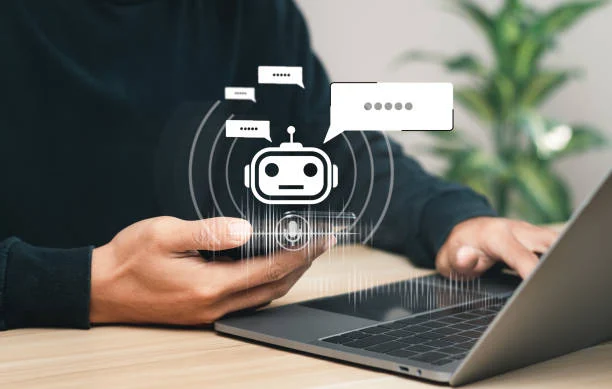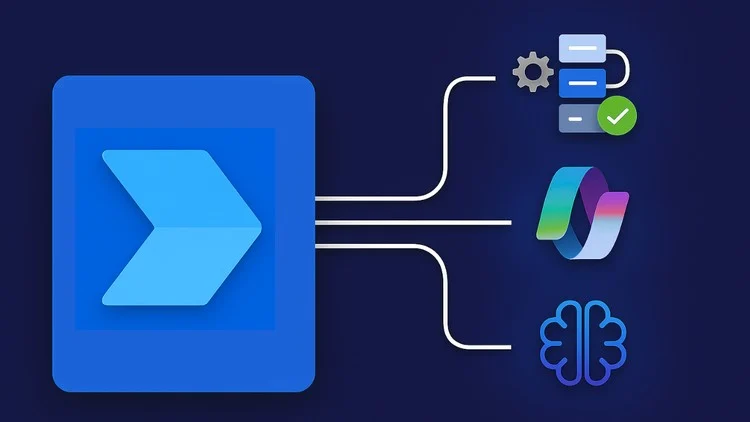Building AI agents has become more accessible with the rise of vibe coding, a method that uses natural language instructions instead of traditional programming. This approach allows developers to create, refine, and deploy AI agents faster by interacting with large language models that generate and evolve code based on user input. Vibe coding streamlines AI agent development by reducing the need for deep coding expertise, enabling more people to automate tasks and build intelligent applications efficiently.
Vibe coding leverages conversational flows with AI coding agents that act as collaborative partners during development. Instead of writing every line of code manually, users guide the AI through a step-by-step process of creating features or adjusting behavior. This method fits well within modern integrated development environments that support agentic coding, making it easier to test, modify, and expand AI agent capabilities on the fly.
This evolving practice taps into frameworks and tools designed to integrate smoothly into existing workflows, helping teams build complex systems with multiple AI agents working together. Developers who understand these principles can harness vibe coding to accelerate their projects and unlock new possibilities in AI-driven software.
Understanding Vibe Coding for AI Agents

Vibe coding enables developers to create AI agents using natural language, focusing on clear instructions instead of detailed programming. It emphasizes collaboration between human intent and AI automation, reducing manual effort while accelerating development.
What Is Vibe Coding?
Vibe coding is a method of creating software by describing desired outcomes in plain language rather than writing traditional code. Developers specify what they want the AI agent to do, and the system generates the corresponding program logic automatically.
This approach uses AI tools to interpret these descriptions and produce functioning applications or AI agents. It removes the need for deep syntax knowledge and allows faster iteration based on intent. Vibe coding suits projects where speed and flexibility are priorities.
Principles of Vibe Coding
Vibe coding operates on several core principles:
- Intent-driven development: Users define goals clearly, leaving procedural details to the AI.
- Agent orchestration: Multiple AI agents can collaborate, each handling specific tasks.
- Iterative refinement: Developers adjust input descriptions to improve output without rewriting code.
- Low-code/no-code integration: Combines natural language with simplified UI tools for building interfaces and backend logic.
These principles make vibe coding a hybrid between direct programming and user-friendly automation, enhancing productivity with real-time feedback and seamless AI collaboration.
Core Differences from Traditional Coding
Traditional coding requires explicit instructions using programming languages and syntax. Developers write step-by-step commands to handle logic, data manipulation, and UI behavior.
In vibe coding, the developer focuses on what the software should achieve, not how to implement it. AI translates these high-level descriptions into executable code. This reduces the need for manual coding but relies heavily on AI accuracy and prompt quality.
Unlike traditional development, vibe coding supports a dynamic feedback loop where outputs evolve based on ongoing natural language input. It shifts the role of the developer toward spontaneous design and validation rather than detailed programming.
The Role of No-Code Platforms in AI Agent Development
No-code platforms have emerged as key tools for building AI agents by simplifying the process and lowering technical barriers. These tools translate user ideas directly into functional applications, enabling faster development cycles and wider participation beyond traditional programming roles.
Overview of No-Code Solutions
No-code platforms provide visual interfaces where users assemble AI agent functionality through drag-and-drop components or simple instructions. Platforms like Imagine.bo and Zero-Code Needed focus on eliminating manual coding by offering pre-built modules for AI integration, API connections, and user interface design.
These solutions emphasize accessibility, allowing creators to build sophisticated automations and AI agents without writing scripts. No-code tools often integrate with AI capabilities like natural language processing and decision-making logic to empower users to deploy agents rapidly.
How AI Translates Ideas to Applications
AI-powered no-code tools convert natural language prompts or structured inputs into executable workflows. This process involves interpreting the user’s intent, generating the necessary backend logic, and orchestrating API calls to external services.
In platforms supporting vibe coding, this seamless translation removes the complexity of traditional coding, enabling a more conversational or descriptive approach. The AI continuously adapts and refines the agent’s operations based on interaction patterns, speeding up iteration and enhancing agent capabilities.
Benefits for Non-Technical Users
No-code AI platforms democratize agent development by reducing dependency on software engineers. Users with little to no programming background can create personalized AI assistants or automations by simply describing their goals.
This lowers cost barriers and shortens the time from concept to deployment. Additionally, non-technical users maintain control over their projects with intuitive tools that encourage experimentation and customization without the risk of breaking code.
Architecting AI Agents with Vibe Coding
Building AI agents with vibe coding begins by translating ideas into clear instructions. This approach eliminates coding barriers by focusing on precise design, workflow generation, and feature layout through natural language commands. Properly structuring these steps ensures the AI produces functional, aligned outputs ready for further refinement.
Defining App Functionality in Plain English
The foundation of vibe coding lies in describing your idea in simple, clear language. Developers or users start by specifying what the AI agent should do, defining core tasks and behaviors without programming jargon. This description guides the AI in understanding the app’s purpose and scope.
Effective description includes outlining input types, expected outputs, and critical conditions. For example, “The app should accept user questions and return summarized answers from a database.” Clear instructions prevent ambiguity, reducing errors in generated code or workflows.
This stage does not require detailed implementation but must communicate function logic comprehensively. The precision of the plain English input directly influences the quality and relevance of generated blueprints.
AI-Generated Blueprints and Workflows
Once the functionality is described, the AI creates a blueprint—a structured plan mapping out system components and their interactions. This AI-generated blueprint serves as a visual or textual representation of app architecture, including data flow and key modules.
The blueprint typically outlines:
- Core functional blocks
- Integration points
- Data inputs and outputs
- Testing checkpoints
These workflows enable developers to verify that the AI’s interpretation matches their intent before code generation. The AI may produce diagrams, pseudo-code, or sequence lists to illustrate logic and dependencies in a clear, editable format.
This iterative process helps refine complexity while maintaining focus on precise execution, allowing users to adjust system logic through natural language prompts or manual edits.
Drafting User Flows and Features
Drafting user flows involves specifying step-by-step interactions between users and the AI agent’s features. This detail guides the AI to generate interfaces and backend processes tied to real-world use cases.
Key elements include:
- Entry points and user triggers
- System responses and feedback loops
- Error handling scenarios
- Feature-specific actions like authentication or data retrieval
Clear user flows ensure the AI builds cohesive, practical components that align with typical usage patterns. Detailed feature drafting supports automated testing and quality control phases, reinforcing code reliability.
This approach bridges the gap between conceptual design and functional delivery by applying straightforward narratives to complex app behavior.
From Blueprint to Production: Automated App Building
Building AI-driven applications through vibe coding involves streamlined automation controlled by clear user intent and expert oversight. The process bridges rapid idea validation and scalable app deployment while maintaining professional standards.
The One-Click Build Process
The one-click build feature automates converting a high-level app description into functional code. By interpreting natural language prompts, AI agents generate front-end interfaces, back-end logic, and integrations without manual coding.
Users input detailed requirements like authentication, data visualization, or workflow automation. The system handles assembling APIs, database connections, and user management modules swiftly. Automation reduces development time from weeks to hours, allowing real-time iteration.
This process supports multiple coding layers, orchestrating components automatically, which simplifies complexity. It is critical that users provide precise input so AI can produce an accurate blueprint aligned with production requirements.
Role of Human Engineer Support
Although AI drives the initial build, human engineers remain essential for quality assurance, customization, and problem-solving. Expert support comes into play to review generated code, optimize performance, and resolve edge cases that AI might overlook.
Experienced developers ensure security best practices are embedded and compliance standards are met. They also fine-tune interfaces or extend functionality beyond standard templates. This expert backup prevents technical debt and reduces hidden bugs in the production app.
Human engineers act as a safeguard in the transition from prototype to production, providing critical judgment and decision-making where AI capabilities are limited.
Ensuring Professional-Grade Quality
Producing professional-grade apps requires thorough testing, security validation, and performance optimization beyond the initial AI-generated code. Continuous integration and deployment workflows are integrated to catch errors early and streamline updates.
Key quality practices include role-based access control setup, data encryption, and resilience under load. Automated tools assess compliance with coding standards and monitor runtime stability. Logging, authentication robustness, and data integrity checks are mandatory components.
Combining AI’s rapid code creation with rigorous human-guided evaluation yields scalable, reliable applications that meet real-world professional standards.
Scalability and Security in AI Agent Deployment
Effective AI agent deployment requires a strong focus on both scalability and security. Ensuring that AI agents can handle increasing workloads without performance loss is critical, alongside protecting data and complying with industry standards. These factors must be carefully balanced to maintain system integrity and user trust.
Built-In Security Features
Security in AI agent deployment involves multiple layers. Essential features include identity management, data encryption, and compliance with regulations such as GDPR and SOC 2. These protocols protect sensitive information and control access to AI components.
AI environments often integrate tools for continuous monitoring and threat detection. Such measures help identify unusual behaviors before they impact the system. Implementing secure API gateways and enforcing authentication protocols also reduces attack surfaces.
Security extends to how AI agents process data. Techniques like data anonymization and secure memory management prevent leaks during runtime. Enterprises deploying AI solutions benefit from frameworks that embed these controls by default to meet regulatory standards.
Deploying on Cloud Platforms
Cloud platforms such as AWS, GCP, and Vercel offer scalable infrastructure tailored for AI agent deployment. These environments provide flexible compute resources that adjust to workload demands, minimizing latency and optimizing costs.
AWS includes services like Amazon Bedrock, which supports the deployment of secure AI agents with enterprise-grade identity and tool integrations. GCP offers managed AI services with integrated security policies, helping teams adhere to compliance mandates like GDPR.
Vercel, while primarily focused on frontend deployments, supports serverless functions that can host AI agents efficiently. Its edge network ensures high availability and reduced response times, making it suitable for latency-sensitive applications.
Automatic Handling of Traffic Spikes
Scalable AI agent systems must dynamically adapt to traffic fluctuations without manual intervention. Autoscaling features in cloud environments detect changes in user demand and allocate resources accordingly.
This capability ensures consistent performance during peak loads by distributing workloads across instances. It also helps control operational costs, as resources scale back when demand decreases.
Effective autoscaling relies on real-time monitoring and predictive algorithms that anticipate traffic patterns. Platforms like AWS and GCP provide built-in services that automate this process, supporting uninterrupted AI agent operation regardless of workload variability.
Use Cases and Target Users
Vibe coding supports a variety of users by simplifying the creation of AI agents through natural language prompts and low-code tools. Its flexibility suits different needs, from starting new businesses to managing complex projects or quickly validating ideas with minimal coding expertise.
For Founders and Entrepreneurs
Founders and entrepreneurs benefit from vibe coding by accelerating product development without deep technical skills. They can quickly translate business ideas into functional AI agents, such as customer support bots or automated workflows, reducing reliance on traditional developers.
This approach allows rapid iteration based on real-time feedback, saving time and resources. Founders can focus on refining business strategies while vibe coding tools handle coding tasks. This lowers barriers to entry, enabling faster go-to-market cycles and early validation of concepts.
Agency and Client Project Management
Agencies leverage vibe coding to deliver client projects efficiently by combining AI-generated code with visual interfaces. This method enhances collaboration across teams, automates routine tasks, and integrates client feedback directly into development workflows.
Project managers benefit from improved transparency as vibe coding provides real-time updates and working prototypes. Agencies can offer tailored solutions like chatbots or data processing agents without extensive backend coding. This improves client satisfaction through faster delivery and consistent quality.
Rapid MVP Development
Building Minimum Viable Products (MVPs) is streamlined through vibe coding by enabling solo makers and small teams to focus on core features only. Instead of spending weeks coding from scratch, they use AI agents to quickly create functional prototypes.
Vibe coding tools support easy iteration cycles, allowing teams to test hypotheses and make changes on the fly. This reduces development time and costs while increasing the chances of achieving product-market fit early in the process. The visual and natural language approach helps non-technical founders validate ideas promptly.
Getting Started with Imagine.bo
Imagine.bo offers early access through a controlled private beta, transparent pricing, and a step-by-step onboarding process designed to help new users quickly engage with the platform’s features. The entry path requires joining a waitlist, understanding the available plans, and navigating an interface built to simplify initial use.
Joining the Private Beta
Access to Imagine.bo begins by signing up for their private beta, which is available only to selected users on a waitlist. Interest is expressed through an application form where users provide basic information and their intended use case for building AI agents. Being on the waitlist does not guarantee immediate access but improves chances when openings occur.
Invitations are distributed in batches, focusing first on early adopters and those with relevant technical backgrounds or projects aligned with the platform’s capabilities. Participation in this beta allows users to test core features and provide feedback, impacting future development.
Pricing Structure and Free Period
Imagine.bo follows a clear pricing model, starting with a free trial period allowing users to explore basic agent creation functions without cost. This trial typically spans a limited number of days or interactions, designed to showcase the platform’s flexibility and ease of use.
After the free period, users choose among several paid plans that scale with usage and added functionalities. Plans are tiered to accommodate both individual developers and teams, offering options based on AI request volume, storage, and integration limits. Pricing details are clearly listed on the website, eliminating ambiguity about future costs.
Navigating the User Onboarding Process
Upon gaining access, new users are guided through a structured onboarding journey. This includes tutorials on setting up projects, creating AI agents using natural language prompts, and integrating workflows without coding.
The interface highlights key features with tooltips and example templates to accelerate learning. Users receive automated tips based on their activity, optimizing their agent-building experience. Support resources like an FAQ and community forums are accessible directly within the platform to address questions promptly.
Future Trends in Building AI Agents
Advancements in AI agent development are driven by innovations in interface design, expanded functional abilities, and shifting roles for human developers. These changes focus on making AI creation more accessible, powerful, and collaborative.
The Evolution of No-Code AI Platforms
No-code AI platforms are becoming more sophisticated, enabling users without programming expertise to build and modify AI agents. These platforms use intuitive visual interfaces and natural language inputs, reducing barriers to entry.
They integrate components like drag-and-drop modules and pre-built templates tailored for specific tasks. This approach accelerates prototyping and deployment, making AI solutions viable for product managers, marketers, and domain experts.
Key features include:
- AI-driven suggestions to optimize workflows
- Real-time feedback for rapid iteration
- Seamless integration with external APIs
This evolution makes AI agent creation more democratized, yet platforms still emphasize transparency to prevent off-target automation.
Expanding Capabilities for Product Builders
AI agents are increasingly capable of handling a broader spectrum of tasks beyond simple automation. They now combine functions such as data analysis, decision-making, and multi-step task orchestration.
Product builders benefit from AI agents that can autonomously debug, adapt to changing inputs, and suggest improvements during development. This reduces manual workload and shortens development cycles.
These systems support complex workflows involving multiple tools and services, enabling:
- Cross-platform integration
- Automated testing and deployment
- Real-time performance monitoring
The expansion of these capabilities allows product teams to concentrate on strategy and creativity rather than routine implementation.
Outlook for Developer Involvement
Despite automation advances, developers remain crucial in guiding AI agent design and ensuring quality. They focus on supervising AI outputs, refining prompts, and maintaining system robustness.
Developer roles are shifting toward orchestration—integrating AI agents with existing infrastructure and overseeing ethical use and compliance. They also address edge cases AI might mishandle.
Future progress will likely emphasize collaborative workflows where developers and AI co-create solutions. This balance leverages AI’s efficiency with human judgment and domain knowledge, improving both innovation and reliability.





